Who doesn’t love a gleaming hardwood floor? It gives your home that extra boost of sophistication and charm. If you’ve been wanting to start sanding your hardwood floors with an orbital sander, you’re in the right place – this step-by-step guide will provide all the essential details on how to take advantage of this amazing tool and make those floors shine! In this guide we’ll discuss the basics of sanding hardwood with an orbital sander, common questions and tips to get the job done efficiently, so keep reading!
What are Orbital Sanders
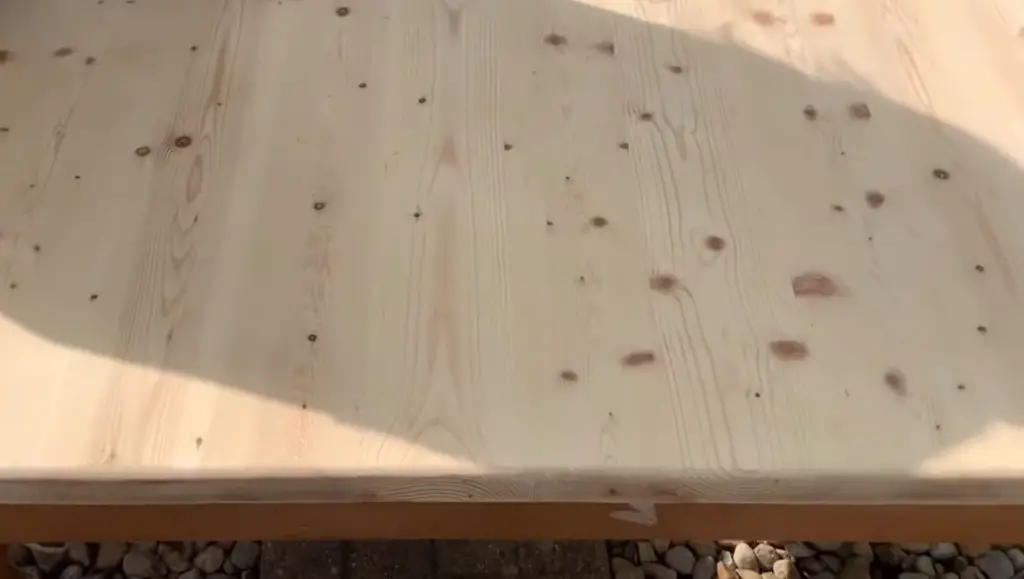
Random orbit sanders use a circular oscillating motion in which they spin around their own axis while also spinning around their orbit’s center. This action allows them to quickly remove material, leaving behind a smooth finish with minimal swirl marks. They can be used for many applications such as removing old paint or varnish, smoothing wood grain, and more.
Dual action sanders combine the same circular oscillating motion with an elliptical pattern, resulting in two directions of vibration to create a more aggressive sanding action. They are ideal for removing stubborn materials like rust or paint and shaping contours in wood or metal.
Orbital sanders can be used with various types of abrasive discs such as aluminum oxide, silicon carbide, and zirconium oxide for normal-duty, coarse-duty, fine-duty, and ultra-fine duty applications. They can also accommodate nonwoven abrasives such as stainless steel wool for polishing tasks.
In order to get the most out of your orbital sander, it is important to maintain it properly by regularly cleaning it after use to prevent clogging from dust particles and debris. Additionally, regular lubrication will help keep the bearing in good condition and ensure that the sander runs smoothly.
In addition to maintenance, it is also important to follow safety guidelines such as using the correct type of abrasive disk for your task, wearing appropriate dust-protection gear when sanding, and keeping a firm grip on the sander at all times. Following these steps will help you get the best results from your orbital sander while minimizing any risks associated with its use.
Now that you know more about orbital sanders and how they work, you are ready to start sanding hardwood floors with an orbital sander! Next up is our guide on how to use an orbital sander for hardwood floors. Keep reading to find out more! [1]
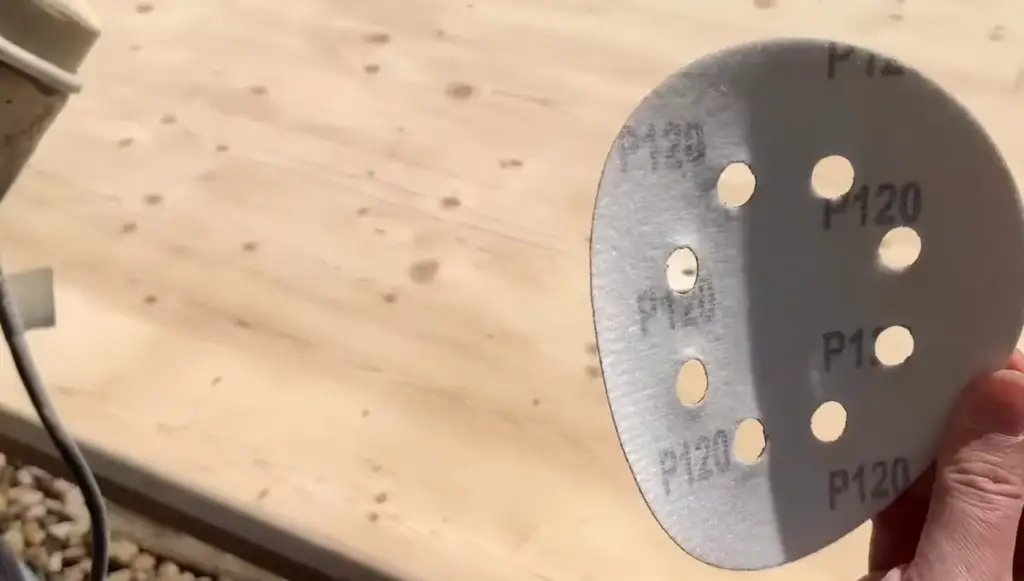
Can You Sand New Hardwood Floors With an Orbital Sander
Yes, you can sand new hardwood floors with an orbital sander. In fact, this is one of the best methods for tackling freshly installed hardwood flooring. It ensures that the surface is prepared adequately and smoothly before applying a finish coat.
When sanding newly-installed hardwood floors with an orbital sander, it’s important to begin with coarser grits and then move up to finer grits as you progress. Coarse grit is better able to remove any imperfections on the wood surface while finer grits will help out any remaining rough spots or ripples. Make sure to use special fine-grit sandpaper specifically for finishing when reaching the final stages of sanding your floor.
It’s also important to bear in mind that sanding shouldn’t be done too quickly. Take your time. We will dive more into the process a little down below.
Once you have finished sanding, make sure to inspect your hardwood floor closely for any imperfections before moving on to apply a finishing coat. [1], [2]
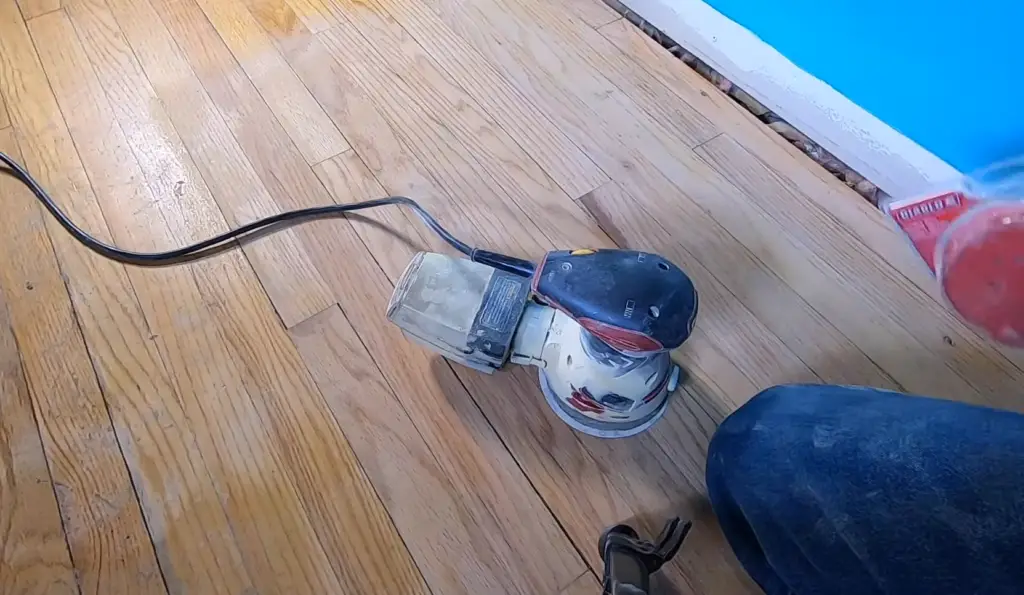
Orbital vs. Drum Sander for Hardwood Floor
When it comes to sanding hardwood floors, you have two main options: an orbital sander and a drum sander.
The main advantage of using an orbital sander is that it’s easy to handle and maneuver. This makes it ideal for areas that are difficult to reach with a drum sander. Additionally, the vibrations created by the oscillating motion of an orbital sander can help reduce fatigue while sanding, which can make the job go faster overall. It’s also important to note that orbital sanders tend to be cheaper than drum sanders and require less maintenance in order to keep them running smoothly.
On the other hand, drum sanders are often used for larger-scale thicker hardwood flooring projects due to their higher power and performance. They are ideal for quickly removing a great deal of material, making them excellent for thick layers of old finish or deep scratches that need to be removed.
One negative of using an orbital sander is the weight, which can be quite heavy compared to a drum sander. This means it can take more effort to handle and operate in some cases. Additionally, orbital sanders are not recommended for deep scratches or thick layers of old finish since they lack the power and performance of a drum sander.
Drum sanders on other hand can damage the wood surface more easily, creating gouges and other imperfections if used incorrectly. It’s also important to note that drum sanders generate a lot of dust, so you need to be particularly mindful of your work environment when using one.
Overall, both orbital sanders and drum sanders can be used effectively for hardwood floor sanding projects. The choice between the two will largely depend on the size and scope of the job you’re undertaking as well as your own personal preferences. If you’re unsure which option to go with, it can be helpful to consult a professional who can advise you on the best course of action for your particular situation.
And remember, if you’re confused, you can always hire a professional floor sander who will be able to help you out and ensure that your hardwood floors look great. Taking precautions and having the right equipment will make sanding hardwood floors easier and more efficient. [1]
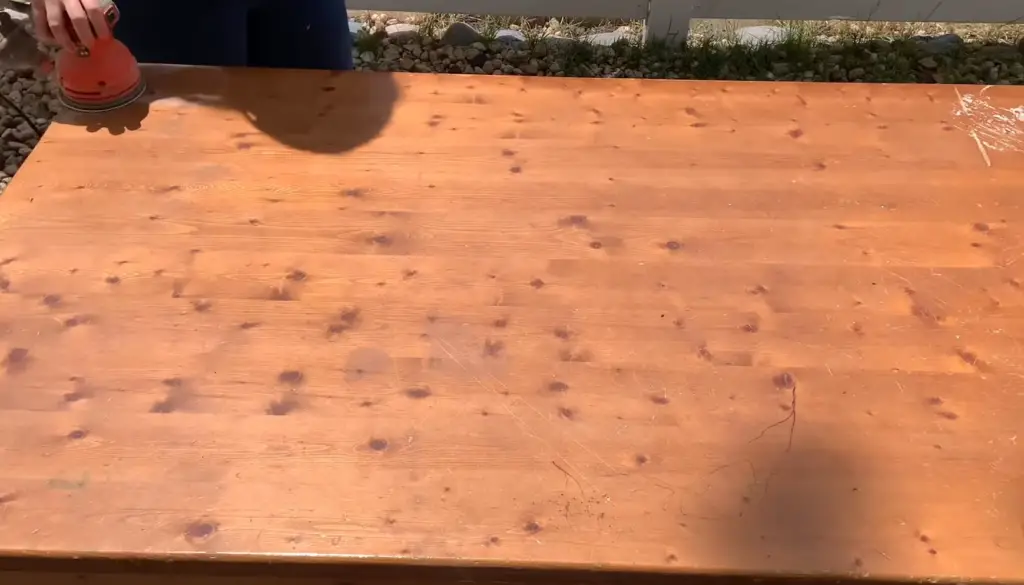
How to Sand Hardwood Using an Orbital Sander
Sanding hardwood with an orbital sander can be a tedious task, but it’s important to take your time and do the job right in order to achieve the best possible results. In this section, we’ll cover the necessary steps to ensure a smooth and even finish on your hardwood floors.
Clean the area
Before starting to sand, it’s important to ensure the floor is properly cleaned and free of any dirt or debris. This can be done with a vacuum cleaner or a broom and dustpan. It’s also a good idea to use a damp cloth to wipe away any stubborn spots that may remain after vacuuming.
Secure the floorboards
Before beginning to sand, take the time to properly secure any loose floorboards that may be present. This is especially important if you’re using an orbital sander as the vibrations can cause them to become even more loose over time.
Choose and install the right sandpaper
When it comes to selecting the right type of sandpaper for your hardwood floors, the grit size will largely depend on how much material needs to be removed from the surface. For instance, a coarse grit paper (e.g., 40-60 grit) would typically be used for deeper scratches or thick layers of old finish that need to be stripped away. On the other hand, a finer grit paper (e.g., 100-180 grit) would be used for a more light sanding job.
Most orbital sanders are designed to accommodate all types of paper, but it’s best to check the manufacturer’s instructions before purchasing any paper. Furthermore, make sure to install the paper correctly and securely in order to avoid any potential damage or accidents while sanding.
Set up dust collection
Another key step when it comes to sanding hardwood floors is setting up an effective dust collection system. This will help minimize the amount of dust that gets airborne during use and also prevent any health hazards from occurring.
For this step, you can either use a shop vacuum or a dust extractor. If you’re using an orbital sander, a shop vac will typically be the most effective option since it has the power to suck up any particles of sawdust that get created during the sanding process.
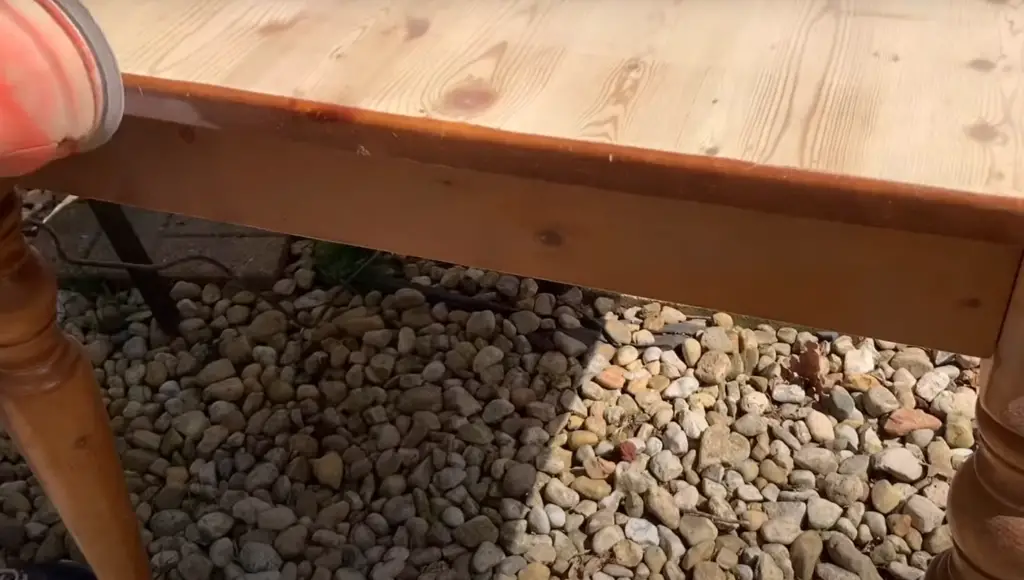
Begin sanding
Now that all of the necessary preparations have been made, you can finally start on the actual sanding process! Begin by setting your sander to its lowest speed and working in small sections at a time to ensure even coverage across the entire floor. Make sure to apply light pressure when moving the sander back and forth over the surface, as too much force can cause damage to the floor.
Once you’ve completed one section, move on to the next and keep repeating the process until all of the floor has been sanded. To avoid any unevenness in your finish, make sure to overlap each pass slightly as you work your way across the entire floor.
Don’t forget about the corners and edges of the room, as these can be difficult to reach with an orbital sander. For these areas, you may want to switch to a smaller hand sander such as an oscil tool or rotary tool.
Inspect and seal
Once you’re done sanding, it’s important to inspect your floors for any remaining splinters or imperfections that may have been missed during the process. If necessary, use a fine grit sandpaper to do some spot-sanding on any problem areas before moving on to sealing.
Finally, once all of the necessary repairs have been made and the floor is completely clean, it’s finally time to seal your hardwood floors. Make sure to choose a high-quality sealant that is designed specifically for use on hardwood floors and follow the instructions closely when applying it.
You may also want to apply wood stain prior to sealing the floors, depending on what look you’re going for. Once you’ve finished staining, it’s only then time to apply a sealant such as polyurethane. This will help protect your floors from wear and tear while also adding a beautiful shine. [1], [2]
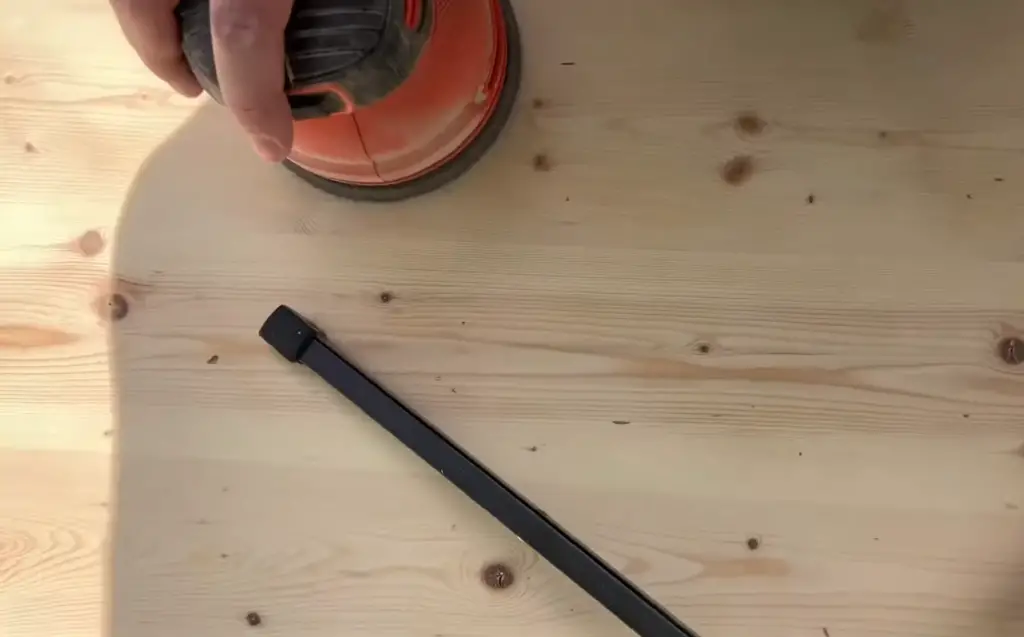
FAQ
How to use an orbital sander?
To use one, you’ll need to first select the appropriate sandpaper grit for your project. Most home improvement stores will carry a variety of sizes and types of sandpaper that are designed for various projects. Once you have the correct type of sandpaper, secure it on the sander’s base plate by clamping it in place with the clamps supplied by the machine.
Next, turn on the sander and set its speed according to what surface you are working on (wood or metal). When ready, move the sander over the surface at a consistent speed using long strokes from one side to another. Do not push down on the sander to hard as this can cause an uneven finish. Keep the sander moving in a uniform direction, so it doesn’t scratch any areas of the surface.
Once you have finished sanding, turn off the machine and use a vacuum cleaner or brush to remove any excess dust particles that may have been left behind. Clean off the sander’s base plate with a damp rag and replace worn sandpaper whenever necessary. With proper care and maintenance, your orbital sander will last for many years and help you achieve professional results every time!
Can you walk on floors after sanding?
Not right away. After the sanding is completed, you need to vacuum the floor and let it sit for 48-72 hours. This allows time for any dust particles that may have been kicked up during sanding, to settle. Then all of the dust needs to be wiped away with a damp cloth before finishing can begin. Once finished, wait another 24 hours before walking on the hardwood floors as this will give the finish ample time to cure properly.
Can you sand hardwood floors with an orbital sander?
You can use an orbital sander to sand hardwood floors. When sanding hardwood floors with an orbital sander, it is important to take the time to properly prepare and protect the area before beginning. First, you must make sure the floor is clean by vacuuming and removing any large debris from the surface of the floor. This will help prevent scratches or other damage that may occur during sanding. Next, you should apply a wax or sealant to help protect the wood from damage caused by sanding. Additionally, it is important to use a low-grit paper when sanding as this will remove any existing finishes without creating deep gouges in the wood’s surface. Finally, be sure to regularly check the sander for clogs as this can cause uneven sanding and damage to the floor. Taking these steps will help ensure a successful sanding job with an orbital sander.
What grit sandpaper for hardwood floors with the orbital sander?
For hardwood floors, you should use an 80-grit sandpaper with an orbital sander. The 80-grit is a relatively coarse sandpaper that will quickly remove the top layer of the floor and help smooth out any imperfections in the surface. It’s important to make sure that you are using a good quality sandpaper so it won’t clog up or wear down quickly on your sander. You can also opt for finer 100- or 120-grit sandpapers if you would like a smoother finish, but this might take a bit longer to achieve. Make sure to always follow manufacturer instructions when using your sander and be careful not to gouge or scratch the wood too deeply as this could damage the surface. With proper technique and care, an orbital sander can help you achieve a smooth, professional-looking finish on your hardwood floors.
Can I sand the floor with a hand orbital sander?
Yes, you can sand a floor with a hand orbital sander. It is important to remember that the orbital sander will not produce as smooth a finish as a drum or belt sander, so additional steps may be needed prior to sealing the floor. Additionally, it is important to use proper technique when using an orbital sander on wood floors. Start in one corner of the room and make your way across the floor in an overlapping pattern, taking care to move the sander slowly along each row while avoiding any abrupt motions which could cause gouges or imperfections in the surface.
Finally, it’s essential that you use grits appropriate for your specific type of wood, starting with coarse grit for deep scratches and gradually working your way up to finer grits for a smoother finish. With proper technique and patience, it is possible to achieve an acceptable result with a hand orbital sander.
How do you use an orbital floor sander on hardwood floors?
Using an orbital floor sander on hardwood floors is a relatively simple process. First, you’ll need to prepare the area by removing all furniture and other objects from the room. Once this is done, vacuum or sweep away any dirt or debris that may be on the hardwood floor surface.
Next, you’ll need to attach a 60-grit sandpaper disc onto the orbital sander’s hook and loop system. This will help ensure that your sanding job is thorough and effective. Then, switch on the sander and begin moving it back and forth along the wood grain in a “figure 8” pattern. Make sure that you’re applying only gentle pressure as you work – too much pressure can cause damage to your hardwood floors.
Once you’ve sanded the entire floor in a figure 8 pattern, you can switch to a thinner sandpaper disc and repeat the process. This will help ensure that your hardwood floors are super smooth and even after they’re finished. Finally, use a vacuum or broom to remove any residual dust from the area before moving on to staining or sealing your beautiful hardwood floors.
Keep in mind that the sandpaper grit should match the flooring you are sanding. If your hardwood floors are prefinished, you’ll want to use a finer grit sandpaper disc than if they were unfinished. Also, make sure to follow all safety guidelines whenever operating an orbital sander and never leave it unattended while in use. With proper technique and care, it is possible to achieve a perfect finish on your hardwood floors using an orbital sander.
Useful Video: Quick Tip: Floor Sanding using an Orbital Sander.
Conclusion
Sanding floors can be a tricky job, so it’s important to understand the basics before you get started. Orbital sanders, while not the lightest, can serve as a great tool for hardwood floor sanding. Using the right sander, proper technique and following the steps outlined above will help ensure you get the best results. If at any point during this project you feel unsure or uncomfortable, do not hesitate to consult with a professional. Doing so could save you time and money in the long run while also helping to maintain your floors’ beauty and longevity.
Remember to collect all of your dust when finished, either by using a vacuum cleaner, shop vac or broom and dustpan. Dispose of it properly as well to avoid potential health hazards or damage to other areas of your home or property. With that, we hope our guide has been helpful in showing you how to sand hardwood floors with an orbital sander. Happy sanding!
References
- https://www.thespruce.com/sanding-hardwood-floors-overview-1821895
- https://www.bobvila.com/articles/how-to-refinish-hardwood-floors/











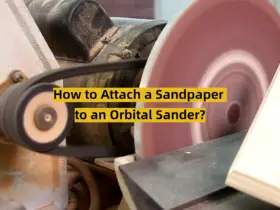
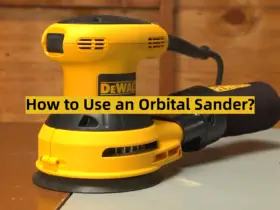

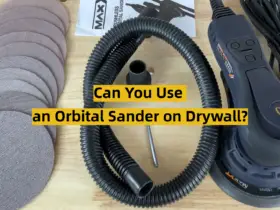
Leave a Reply